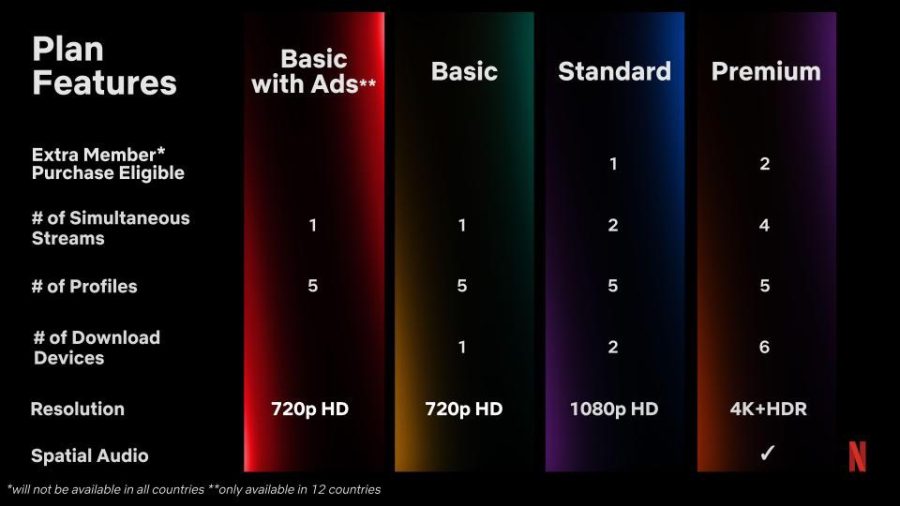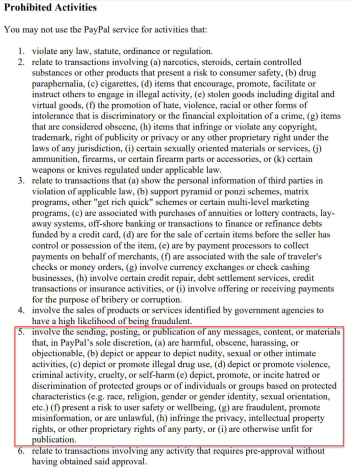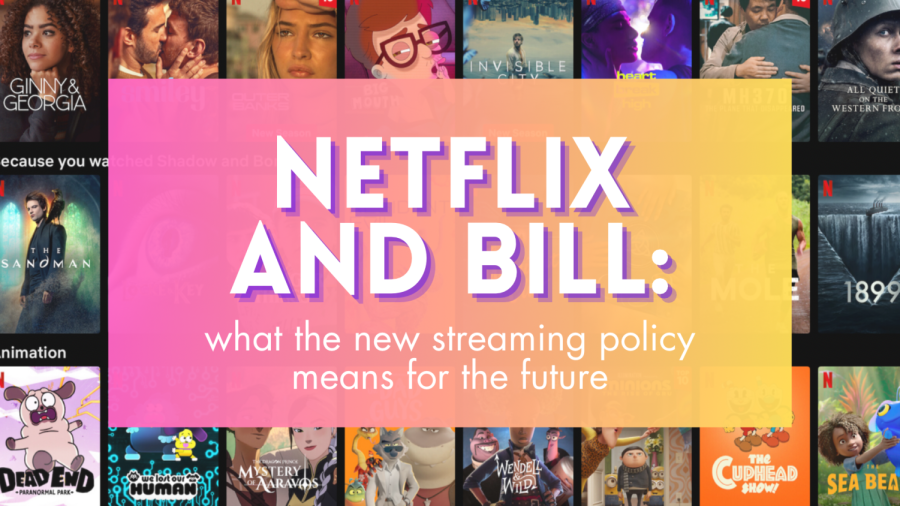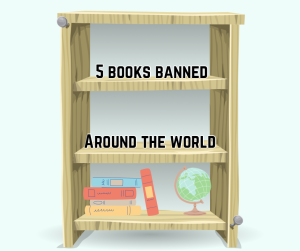Netflix and bill: What the new streaming policy means for the future
Courtesy of Netflix; Graphic by Sydney Lawson
New changes made for the betterment of a company might eventually lead to their own downfall from backlash and consumer responses as shown by Netflix and PayPal.
March 22, 2023
Several weeks ago, Netflix’s support page listed a new subscription plan policy. As a result, faced severe backlash from consumers and the media alike.
New changes to their policy included paying extra for more members to use a single account, having to sign in at the account holder’s “primary location” every 31 days and having to get access codes to watch Netflix on the go for seven days at a time. Along with all this, consumers must also purchase subscription packages to decide the number of simultaneous streams.
The packages are as follows:
- Basic With Ads ($6.99 per Month) — 1 Device
- Basic ($9.99 per Month) –- 1 Device
- Standard ($15.49 per Month) — 2 Devices
- Premium ($19.99 per Month) — 4 Devices

While this might not seem expensive at first glance, it starts to add up once you begin figuring out your own monthly Netflix bill. Not only will you have to choose between having ads or not, but you will also have to consider how many people you want to have access to your account for their own streaming.
According to the U.S. Census Bureau, the average number of people in one family home is 2.60. This could mean that a Netflix bill for the primary account holder could come out to be $15.49 for the Standard plan, which will allow for two people to use the account and watch something simultaneously.
But what about those who live by themselves and pay for their own accounts? Surely a Basic subscription status, with ads or without, would work? While this argument is valid, it’s important to remember the resolution limits Netflix is also imposing for the account subscription packages.
Both basic subscriptions would only stream at 720p HD resolution instead of the standard 1080p HD resolution that is incorporated into many movies and streaming services today. If you don’t know much about resolution and pixels then you might not think you are affected much by this and just plan on getting the basic subscription. However, there is a significant difference between 720p and 1080p.

In the image above you can see the difference in visual clarity between the 720p and 1080p resolution sizes. While the 720p is more grainy and lacks detail, the 1080p conveys more and offers a lot in detail. So, while there is a basic subscription status that costs less than the Standard Plan which has 1080p, it might be worth considering the sacrifice you will have to make visually.
For myself, visual clarity is something that can’t have a ‘let’s cut corners’ attitude. I can usually notice when something I’m watching is only in 720p. As a computer science major who stares at computer screens all day, a difference in resolution is very noticeable, and having to pay an extra fee for this feels like I’m constantly being ripped off when looking at other streaming services that don’t have resolution caps.
HBO Max, for instance,offers 1080p even with its cheapest subscription plan.
While frustration with resolution isn’t experienced by everyone, it is important to remember and keep in mind when choosing a plan.
Several days after Netflix introduced the idea of the updated policy on sharing, an apology was issued with an explanation that the new policy was added to the website unintentionally. They said it wasn’t applicable for the United States just yet, but is in effect for several other countries most recently including Canada, Spain, Portugal, and New Zealand.
Even with this apology, it seems many still distrust the corporation and fear for what this might mean for future business plans in Netflix and other big companies.

Penny-pinching business practices like what Netflix pulled aren’t new, as can be evidenced by PayPal’s recent controversy regarding their decision in October 2022 to charge their users for ‘misinformation.’
Users who faced the wrath of the PayPal council would have to cough up $2500 for each count of ‘misinformation’ or “any messages, content, or materials that, in PayPal’s sole discretion,” are “harmful, obscene, harassing, or objectionable” along with a list of other ungodly acts. Once reality set in and people started calling them out, PayPal dropped these changes that would have taken effect in November 2022.
A spokesperson stated it “went out in error” and “included incorrect information” according to the National Review.
What PayPal did just goes to show how companies and businesses are evolving and working now. However, all is not lost. Both Netflix and PayPal have seemingly shown, albeit unintentionally, that everyone has a voice and their opinions matter. Ironic, considering PayPal’s censorship idea.
What can we learn from this? Well, obviously that attempting to introduce ideas like these will more than likely lead to nothing beneficial. But, more importantly, it also shows that your voice matters and you can make a difference when it comes to fighting against big corporations that attempt to impose these types of changes.

















